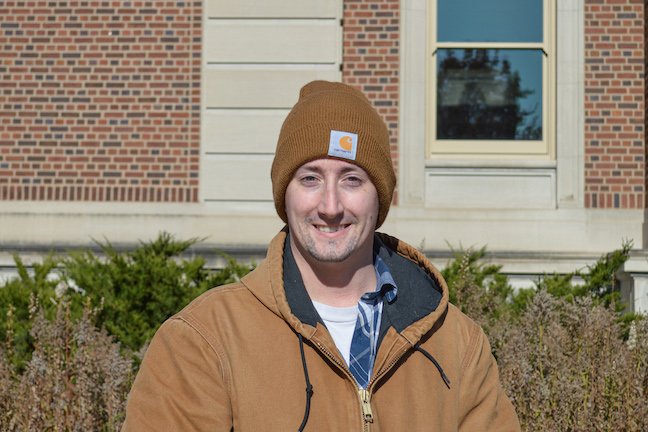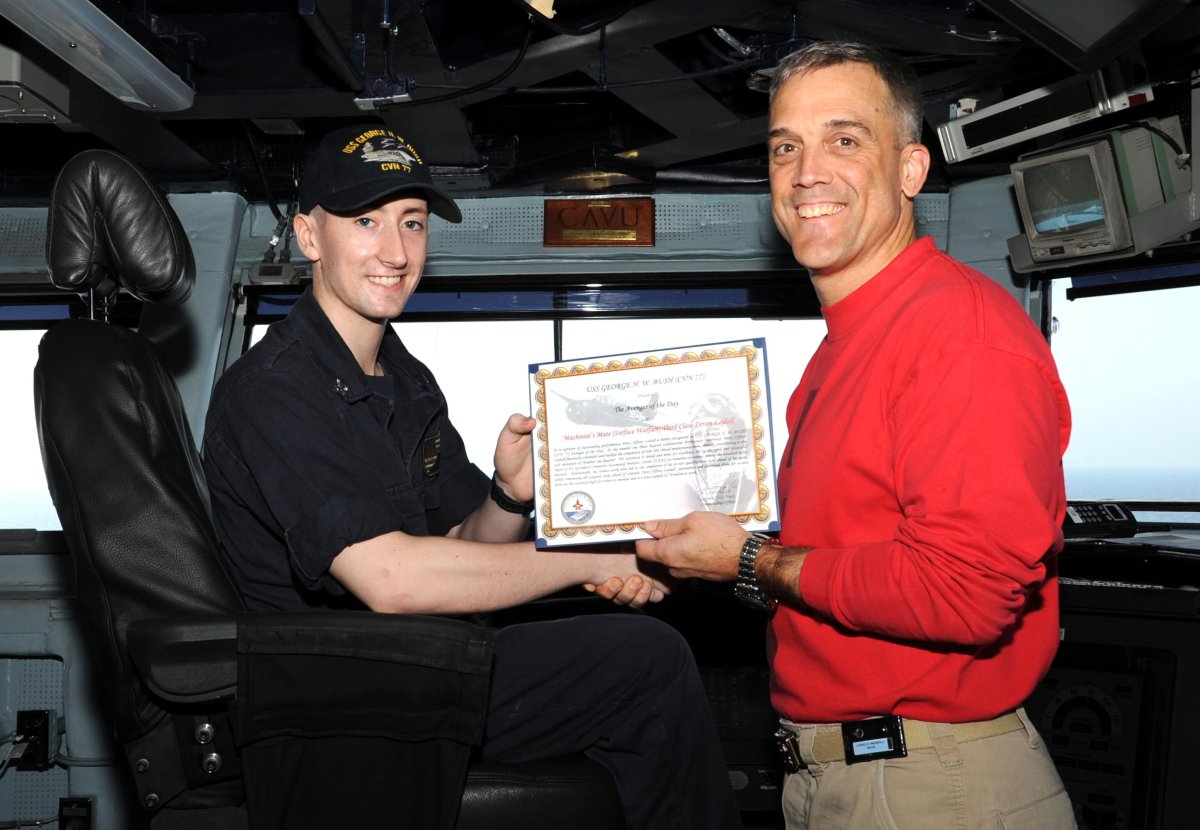From military deployment to Minnesota roads

CSE student veteran Deven Leidall finds a place in civil engineering
November 7, 2019
Adjusting to student life after serving in the military can be a difficult task.
“It’s a really strange transition when you get out of the military,” said Deven Leidall, former U.S. Navy Petty Officer Second Class. “You go from constantly being on the move and working, and then everything just stops and you can suddenly do what you want to do.”
Leidall spent six years as an enlisted sailor, stationed in the Persian Gulf and most recently aboard the USS George H.W. Bush in Norfolk, Va. Now, he’s a senior studying civil engineering in the College of Science and Engineering at the University of Minnesota Twin Cities.
As a Naval nuclear machinist mate, Leidall helped maintain and operate a nuclear reactor and was responsible for training and educating other sailors.

Leidall, who hails from Austin, Minn. and received the college's Westwood Professional Services, Inc. Scholarship in his first year, has always aspired to continue his education at the University of Minnesota.
He knew he wanted to go into engineering—but was interested in a broad range of things from structures to the environment. So naturally, civil engineering was a good fit.
“[The U of M] felt like home for me,” he said. “I always saw it as the best school, and I wanted to shoot for the best.”
Learning the ropes
This past summer and continuing through fall semester, Leidall has participated in the Civil Engineering Internship Program, a partnership between the University’s Center for Transportation Studies and the Minnesota Department of Transportation (MnDOT). The program gives students hands-on professional experience to help them prepare for careers in transportation.
Working out of MnDOT’s offices in Roseville, Minn., Leidall uses software to design metro-area roadways, crosswalks, and sidewalks. A huge part of his internship is making sure sidewalks and roads are accessible for all by meeting the requirements of the Americans with Disabilities Act.
“I have learned a lot about how and why our sidewalks and roadways are built the way they are, from where people stand when waiting to cross a road to designing roadways to discourage illegal U-turns,” Leidall said.
“The main idea is to create an aesthetically pleasing, highly functional and safe path from the start of a project to the end,” he said.
Following graduation, Leidall plans to either seek a master’s degree at the University of Minnesota or apply for the MnDOT graduate engineer program.
Transitioning from military life
CSE has an estimated 140 student veterans, the second-highest number at the University. Leidall said this may be because a lot of veterans have first-hand experience working with mechanics and engineers in the military, so that knowledge and interest naturally transitions to their studies in college.
Although there are distinct differences between Leidall’s student life and his years as an enlisted sailor, he said his military experiences have greatly influenced his collegiate career.
“I definitely think I’m a different student now than if I had come here right after high school,” Leidall said. “The military definitely gave me discipline–it’s really ingrained to people who’ve served.”
During his deployment, Leidall was named “Avenger of the Day” for his leadership in ensuring sailors within his division were ready to perform their duties. That honor earned him the chance to drive the aircraft carrier. Leidall said his commanding officer even called his wife and father to tell them he was doing a great job.
“There were so many perks that happened throughout my military career I would have never experienced if I hadn’t joined,” he said.
“I’d do it all again if I had the chance—joining the Navy, going to the U of M, and taking this internship," Leidall said.
The University of Minnesota is starting an affinity group to provide resources and a likeminded community for veterans at the University. Leidall said providing space for veterans to meet and exchange stories can help them feel less alienated.
“Society has a pretty broad stereotype on what a military person is, and it’s usually not right,” he said. “If veterans who are just getting out of service can talk to people and see how other veterans transitioned, they can know that what they’re going through is normal.”
Adapted from CTS Catalyst, Center for Transportation Studies, and an article written by Meagan Pierluissi.
______________________________________________________________________________
If you’d like to support students in the University of Minnesota College of Science and Engineering, visit our CSE Giving website.
